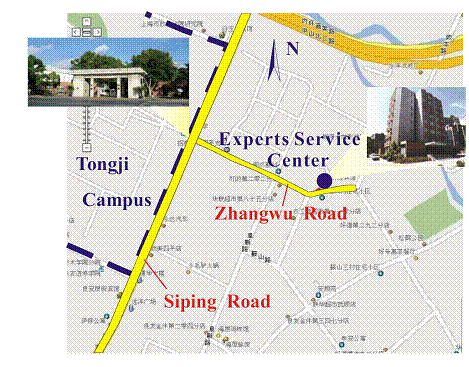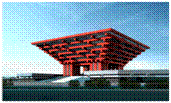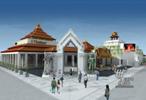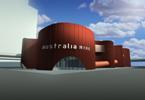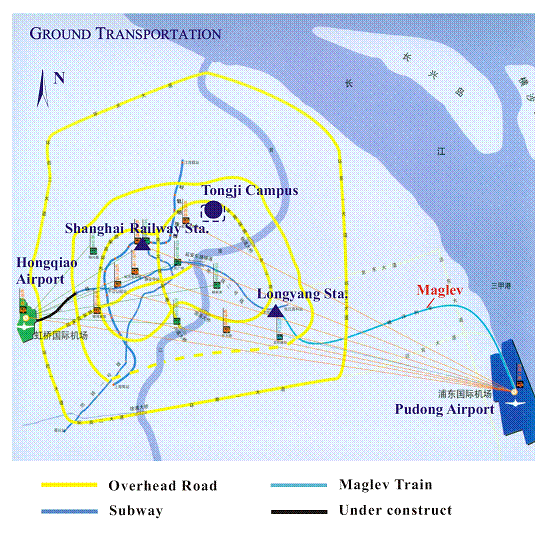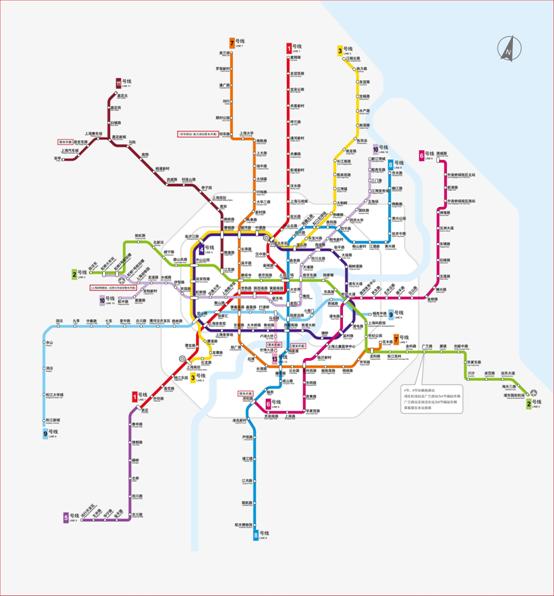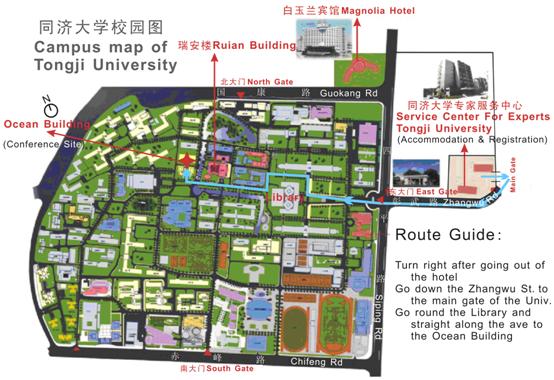|
News Center
|
Events
2nd circular Global Monsoon symposium PAGES 2nd Global Monsoon Symposium(Click to Download) Global Monsoon and Low-Latitude Processes: Evolution and Variability
Tongji University, Shanghai September 13-15, 2010 Second Circular
DEADLINE Abstract Submission and Early Registration July 31, 2010 The First Circular was warmly responded by both paleo- and modern climatology communities. Here is the Second Circular with an extended scientific coverage to include monsoon –related extreme hydrological events, and with detailed information about abstract submission and registration. Please notice the deadline of July 31st. Launched in 2007, the PAGES Working Group “Global Monsoon and Low-Latitude Processes: Evolution and Variability” had its First Symposium in Shanghai, October 29-31, 2008. 60 scientists from 5 continents gathered at Tongji University in Shanghai for the first PAGES Global Monsoon Symposium to discuss global monsoon changes from a geological perspective.The symposium brought together paleo- and modern climatologists, data-producers and modelers, and provided a general review of the current status of global monsoon studies and some preliminary discussion on several basic questions such as the concept of “global monsoon”. Of great interest was the coherent variations of regional monsoons on orbital scales, yet no consensus was reached in the use of monsoon proxies. The 2nd Symposium in 2010 will be a continuation with in-depth discussion on the concept of Global Monsoon and its response to external forcing and variability arising from internal feedback processes in the Earth climate. The focus will be laid on the following four topics with a broadened temporal scope:
Scientific Committee(* co-chairs):
Secretariat Contact
Scientific Program: Oral Sessions: Oral sessions will include invited and contributed papers. Following are some papers to be presented at the Symposium: Global Monsoon
Global View on Regional Monsoons
Extreme Hydrological Events and Global Monsoon over Last Millennium
Poster Sessions: All posters will be displayed during all three days of the symposium and time will be allocated specifically to view posters.The display area for a poster is 0.90 m wide and 1.20 m high. Self-adhesive Velcro tape and/or pins will be available to attach your poster. General Information Venue: Lecture hall in the ground floor, Ocean Building, School of Ocean and Earth Sciences, Tongji University, 1239 Siping Road, Shanghai, China Accommodation: Rooms for the participants have been reserved in the Experts Service Center of Tongji University This is a 3-star hotel with 170 rooms, about 10 min walking distance from the meeting site. The room price is 388 RMB (~60 U.S. dollars) which includes free breakfast and free internet access in the room. Please send an email to Jun Tian (tianjun@tongji.edu.cn) to indicate if you need us to reserve the hotel for you.
Registration: Registration fee is US$100.00 until July 31, 2010, and US$150.00 afterwards. Abstract deadline: July 31, 2010 Required Abstract Format Page format: A4 size, with 2.54 cm margins on top and bottom, and 3.17 cm margins at both sides, single-spaced. The abstract should include paper title, author’s name, authors’ affiliation, and should be no more than 500 words, with one figure at maximum.
Excursion: EXPO 2010 SHANGHAI CHINA Duration : May 1 to Oct 31, 2010 Website : http://en.expo2010.cn/ On September 16, we will organize a one-day visit of the EXPO 2010. The cost of 180 RMB (~27 U.S. dollars) is not included in the registration fee. Please send an email to Jun Tian (tianjun@tongji.edu.cn) or write on the registration form if you want to join the EXPO excursion. Pictures of some pavilions
Expo 2010 Shanghai China will be a great event to explore the full potential of urban life in the 21st century and a significant period in urban evolution. Fifty-five percent of the world population is expected to live in cities by the year 2010. The prospect of future urban life, a subject of global interest, concerns all nations, developed or less developed, and their people. Being the first World Exposition on the theme of city, Exposition 2010 will attract governments and people from across the world, focusing on the theme "Better City, Better Life." For its 184 days, participants will display urban civilization to the full extent, exchange their experiences of urban development, disseminate advanced notions on cities and explore new approaches to human habitat, lifestyle and working conditions in the new century. They will learn how to create an eco-friendly society and maintain the sustainable development of human beings. Ground Transportation There are two international airports in Shanghai, the Pudong International Airport (airport code PVG) and the Hongqiao International Airport (airport code SHA). Therefore, pay attention to the airport where you will arrive. It is very easy to reach the Expert Service Center of Tongji University from the airports by taxi, and less so by public transport.
From the Pudong International Airport: Metro: Take Line 2, and transfer in Station “East Nanjing Road” for Line 10, then stop at the station “Tongji University”. Please notice the start and end time of the Metro lines. Taxi: Take a taxi at the Pudong Airport directly to the Tongji Expert Centre. It takes you less than one hour and costs about 150 yuan. Maglev + taxi: Take Maglev at the Pudong Airport, get off Maglev at the Longyang Station (terminal of Maglev). Then, take a taxi outside the Longyang Sta. to the Tongji Expert Centre. Ticket of Maglev: 50 yuan each, or 40 yuan each by showing your flight ticket. Taxi costs about 50 yuan. Maglev + Metros + Taxi: This is cheaper but more complicated choice.Take Maglev at the Pudong Airport, transit to Metro Line 2 at the Longyang Sta. (terminal of Maglev), then change to Metro Line 4 at the “Century Avenue” Sta., and get off at the “Siping Road” Sta. The distance from “Siping Road” Sta. to the Tongji Expert Centre measures about 1.5km, so a taxi will cost you only 11 yuan. Airport bus + Taxi: Take Airport Bus Line 4 at the Pudong Airport, get off the Bus at one of the 3 stations: Wu Jiaochang, Da Baishu or Hongkou football stadium, and then take a taxi to the Tongji Expert Centre for about 20 yuan. All three stations are at a similar distance from the Centre. From the Hongqiao International Airport: Taxi: Take a taxi from the Hongqiao Airport to the Tongji Expert Centre is the easiest way. It takes you about 40 minutes and costs ~70 yuan. There are also Airport buses, but none of those comes close to Tongji. Metro: Take Line 2, and transfer in Station “East Nanjing Road” for Line 10, then stop at the station “Tongji University”. Please notice the start and end time of the Metro lines. In general, taxi transport is highly recommended, especially both the Maglev and some Airport bus lines do not serve after 21:00. Please show the following note to the taxi driver who does not understand English:
Visiting Shanghai The largest city in China, Shanghai contains the most striking blend of oriental and western cultures and of the past and present. In this city, European-style buildings can be seen standing alongside typical Chinese structures and ancient temples. Modern ocean-going vessels sail past junks. A flourishing commercial and industrial center, Shanghai has a population of over 16 million and a land area of 3,355 square miles. Find more information and attractions in Shanghai at http://www.chinatour.com/attraction/shanghai.htm. Weather September is in the late summer in Shanghai. Most of the days in September would be sunny and dry. The weather forecast of Shanghai is available at http://weather.china.org.cn/english/. Subway The subway system in Shanghai is convenient. The Tongji University Station of Line 10 is just at the gate of Tongji University. A subway ticket costs from 2 yuan to 7 yuan, depending on distance.
Shanghai Subway System Currency Chinese currency is called Renminbi (RMB) which means “People’s Currency”. The units are 圆yuan, 角jiao (0.1 yuan), and 分fen (0.01 yuan). The paper currency includes 100, 50, 20, 10, 5 and rarely 1 yuan, and coins include 1, 0.5, and 0.1 yuan. Occasionally you may receive 0.05, 0.02, and 0.01 yuan coin as change in supermarkets. See more details at http://www.chinatour.com/currency/currency.htm. Money Exchange Money exchange is available in the Airport upon your arrival, and you will need Chinese money for transport. Although there are China Merchants Bank and China Construction Bank on the way of the hotel to the university, and some ATMs nearby are 24- hour open for your convenient currency exchange. The current exchange rate is approximately:
Campus of Tongji campus
PAGES Global Monsoon 2010 Symposium -- Global Monsoon and Low-Latitude Processes: Evolution and Variability Shanghai, September 13-15, 2010 REGISTRATION and ACCOMMODATION Please complete this form and fax or mail it to the Conference Secretariat: Forms must be received by 31 July 2010 for early registration
REGISTRATION
REGISTRATION FEES
ACCOMMODATION To guarantee your reservation, your credit card information is required. However, it is not charged until you check in. The total accommodation will be charged on the date of on-site registration .All rooms will be assigned on first-come first-served basis.
FIELD EXCURSION
Information of credit card:
|
||||||||||||||||||||||||||||||||||||||||||||||||||||||||||||||||||||||||||||||||||||||||||||||||||||||||||||||||||||||||||||||||||||||||||||||||||||||||||||||||||||||||||||||||||||||||||||||||||||||||||||||||||||||||||||||||||||
-
SIMSSecondary Ion Mass Spectrometer Laboratory
-
MC-ICPMSMultiple-collector ICPMS Laboratory
-
EM & TEMElectron Microprobe and Transmission Electron Microscope Laboratory
-
SISolid Isotope Laboratory
-
StIStable Isotope Laboratory
-
RMPARock-Mineral Preparation and Analysis
-
AAH40Ar/39Ar & (U-Th)/He Laboratory
-
EMLElectron Microscopy Laboratory
-
USCLUranium Series Chronology Laboratory
-
SASeismic Array Laboratory
-
SEELaboratory of Space Environment Exploration Laboratory
-
PGPaleomagnetism and Geochronology Laboratory
-
BioMNSFrance-China Bio-mineralization and Nano-structure Laboratory


